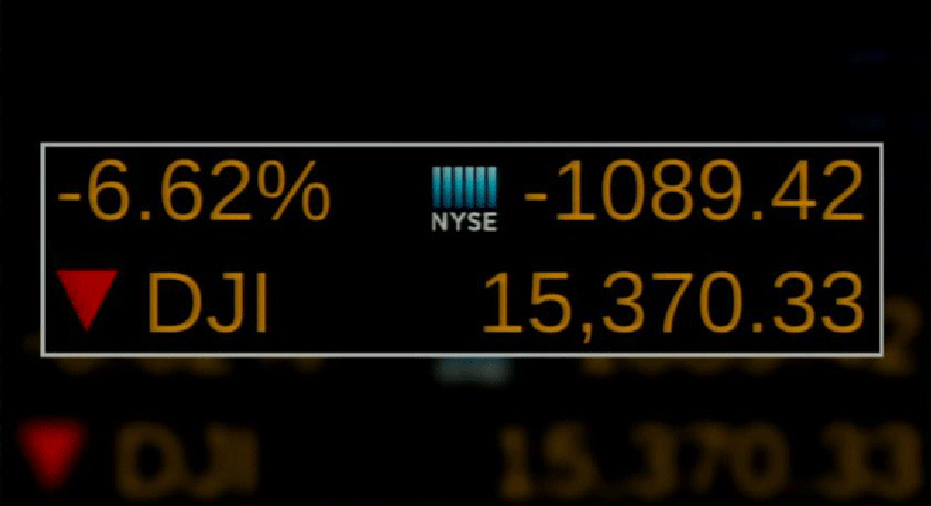Dow Crash 1-Year Later, Is Triage Still Needed?

In the months leading up to August 24, 2015, market vital signs appeared healthy. There were typical concerns with the Federal Reserve about the potential for rising interest rates, and ears were attuned to the pressures building, and growth slowing, in China.
But after almost seven years of continued growth and stabilization, nothing on the market monitor forecasted the code blue alert that blasted through the financial sector that late summer day causing a market melee five minutes after the opening bell. The Dow Jones Industrial Average hemorrhaged, dropping an unprecedented 1,089 points early in the session before rebounding. In total, due to large downward price moves, 1,278 circuit breakers were triggered for 471 Exchange Traded Funds (ETFs) or stocks which paused trading in an effort to rebuild liquidity. As panic settled, the Dow ended 588 points down – the biggest single-day loss in years.
August 24, 2015 wasn’t the only time in recent years that some markets needed triage. On October 15, 2014, US Treasuries – commonly regarded as one of the most globally liquid markets and therefore considered to be relatively immune to volatility convulsions – experienced a precipitous plummet in the benchmark 10-year Treasury before recovering. The level of intraday volatility had been seen only three times in 17 years. However, unlike all the other episodes, the October 15 angina was not accompanied by any significant policy announcement. As cited in the government’s Joint Staff Report post mortem of that day, proprietary speed traders stepped in and provided robust liquidity which helped stabilize both cash and futures markets.
Similarly, markets suffered a massive cardiovascular event on May 6, 2010 – the Flash Crash – where the Dow tumbled nearly1,000 points in a roughly 20-minute period before recovering most of the losses. Following that episode, a Joint Securities and Exchange Commission (SEC)/Commodity Futures Trading Commission (CFTC) report [which I contributed to] documented the intense interrelationship between the derivative and equity markets. The agencies, thankfully, harmonized circuit breakers – at least to a very large extent.
Circuit breakers had existed for years in derivative markets and worked exceedingly well, and they served to alleviate pressure during the Flash Crash. In contrast, market-wide circuit breakers on equities were not triggered in 2010 and single stock circuit breakers were not in place. Having circuit breakers instituted before August 24, 2015, however, was key to the replenishment (albeit choppy) of liquidity on that day, but precision surgical instruments they are not. In the SEC’s own post mortem of August 24, initiated immediately under the able leadership of Chair Mary Jo White, the Commission concluded that the circuit breakers could have performed better. Incidentally, earlier this year we witnessed improperly calibrated Chinese circuit breakers which contributed to extreme volatility on the Shanghai Composite Index, which had a ripple effect for several days on both European and US markets.
What's clear is that appropriate circuit breakers need to be both harmonized and calibrated. Some have suggested that rather than a period of time where trading is paused (15 minutes, as is the case now) perhaps a critical mass of liquidity should be established before trading resumes. Others have suggested a circuit breaker that would prohibit retail trading under certain volatile conditions. And, some have suggested circuit breakers specifically for ETFs, given they were disproportionately impacted on August 24th. Over 40 percent of 499 ETFs experienced a circuit breaker. These and other questions remain on the agenda of regulators and merit thoughtful consideration to ensure that investors are protected and that markets remain fair, orderly and efficient.
Another area of examination is a little-known provision, Rule 201, that restricts certain trading (short sales on the down tick) if a stock has experienced a ten percent decrease from the previous day’s close. While this may serve to ensure there isn’t a piling on, thus inappropriately crashing a stock, it also has, perhaps unintended, a negative impact on liquidity as market makers try to appropriately hedge both their single stock positions and ETF positions (the baskets of stocks). Without an exemption for market makers to Rule 201, they simply can't provide the needed liquidity necessary during volatile market events.
Time and again, we have seen market makers step up and remedy volatile markets. Any rule that diminishes liquidity needs to be re-examined . . . and quickly.
Finally, we need to ensure that any potential regulatory “cure” for what occurred on August 24, 2015, doesn’t make things worse. Like advertisements for pharmaceuticals that may remedy a problem but also could “result in death”, we need to exercise care in prescribing policy procedures that aren’t in the long-term interest of markets. With over 50 percent of Americans having some exposure to the stock market, we need to be tremendously cautious. As 19-century surgeon Thomas Inman is noted as writing: “Practice two things in your dealings with disease: either help or do not harm the patient.”
We’ve seen the Dow at record highs in recent weeks and NASDAQ hit an all-time high this week. Derivative markets have also traded with all-time volumes. Today’s modern financial markets continue to fuel-inject the economic engine of our democracy.
Let’s keep them that way.
Former Commissioner Bart Chilton served at the CFTC from 2007-2014. He is now a Senior Policy Advisor at the global business law firm DLA Piper and is the author of Ponzimonium: How Scam Artists Are Ripping Off America. He can be reached at bartchilton@bartchilton.com



















